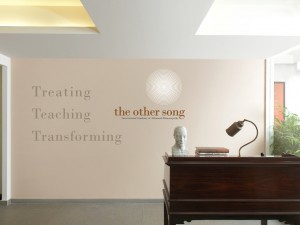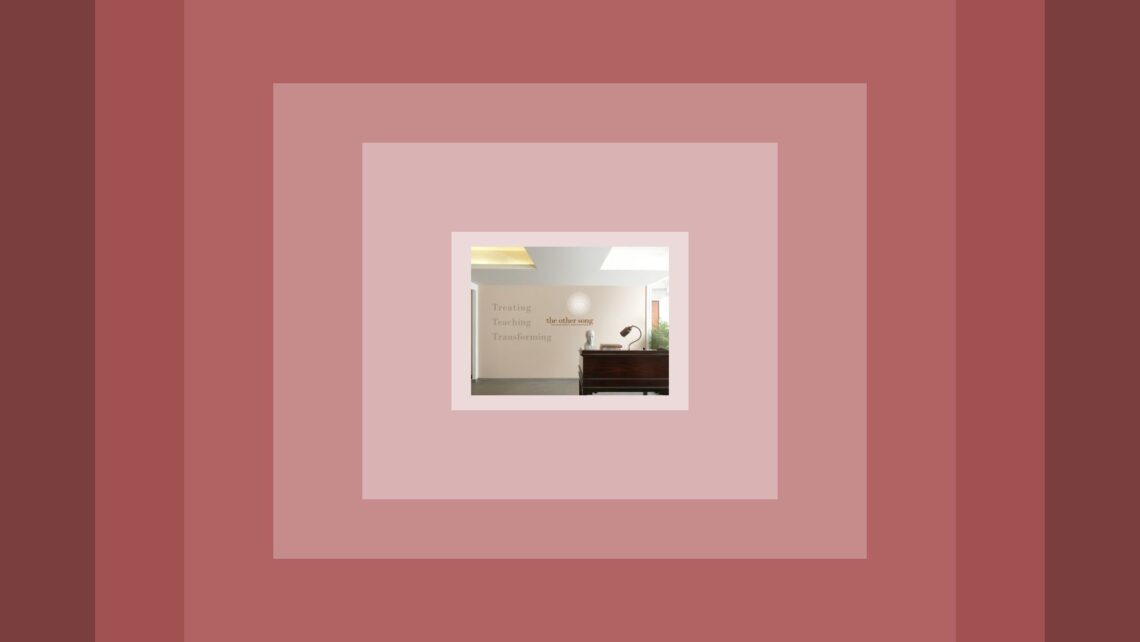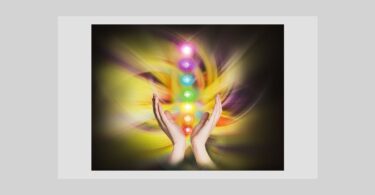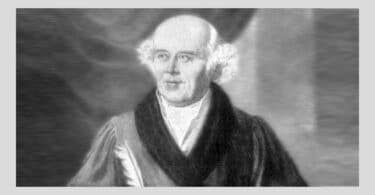A convergence of experienced minds discuss the scope of homoeopathy in mental health.
 ‘The Other Song – International Academy of Advanced Homoeopathy’ is an institute established in Mumbai by Dr. Rajan Sankaran and his team with the main objective of ‘Treating, Teaching and Transforming’. A world class, premier medical Centre, the Academy puts good health and well-being at the core of an academic culture dedicated to complete patient care, extensive training and in-depth education. The Academy is a common platform where different approaches and advances are encouraged and pioneers from various schools of Homoeopathy are invited to share their knowledge and experience. (www.theothersong.com)
‘The Other Song – International Academy of Advanced Homoeopathy’ is an institute established in Mumbai by Dr. Rajan Sankaran and his team with the main objective of ‘Treating, Teaching and Transforming’. A world class, premier medical Centre, the Academy puts good health and well-being at the core of an academic culture dedicated to complete patient care, extensive training and in-depth education. The Academy is a common platform where different approaches and advances are encouraged and pioneers from various schools of Homoeopathy are invited to share their knowledge and experience. (www.theothersong.com)
As a step further in such an attempt at sharing, the academy hosted a conference ‘Homoeopathy for Mental Health’ on 24th, 25th and 26th November, 2013, wherein a panel of seasoned and versatile senior homoeopaths presented their considered views on the scope of Homoeopathy in mental health. They stressed that there is no marked dichotomy between mental or psychiatric ailments and physical disorders. On the contrary, mental wellbeing not only mirrors but also monitors holistic health in a symbiotic harmony.
The main purpose of this seminar was to bring together at a single forum established exponents from varying schools of Homoeopathy. In the ultimate analysis, they all converged on the assured attainment of efficacy of therapy.
The following paragraph encapsulates the salient points of the seminar.
DR. JAYESH SHAH:
The statement “A well taken case is half the cure,” emphasizes the importance of thorough case-taking. Dr. Jayesh Shah, a renowned homoeopath with over a quarter century of practice under his belt, commands a formidable reputation as an exponent of meditation oriented approaches to Homoeopathy. He has developed a unique method of case-taking wherein he integrates various meditative techniques with homoeopathic concepts and philosophy, especially the sensation approach, to explore the patients’ deepest and core issues in order to ensure optimum efficacy of therapy. The keystone of his technique is stimulation of enhanced awareness of the cause and effect of the disease the patient is afflicted with. Through a case of a female with multiple allergies and hay fever, who was not responding to the treatment given previously, he adopted this approach in case-taking. He took the patient into deeper levels of experience, from her conscious state into the unconscious realm, wherein he helped the patient experience not only her chief complaint that she experienced as tightening, constricting, irritating and smothering her, but also guided her to experience the other polarity within her which consisted of a sense of boundless freedom and unlimited openness. With the understanding of these two polarities, he came to the family Hamamelidae[1] (the group to which Cannabis indica belongs) and the patient was given the remedy Urtica urens, which is also a well-known remedy for allergies and hay fever.
The most important message he gave to the audience towards the end of his lecture was that we always ask our patients to talk about the illness, the mentals and the experience of and around the chief complaint. We often research the disease and ignore the other polarity of life that is the case.
DR. WILLI NEUHOLD:
Dr. Willi Neuhold is a renowned homoeopath from Austria who has practiced for the last 25 years. Formerly a professor at the University of Graz in Austria, he has published numerous articles in various journals and books. Willi presented cases where he had prescribed remedies from the family Apocynaceae[2], like Oleander and Strophanthus hispidus.
Besides illustrating the sensations, active and passive reactions of the family (as per Dr Sankaran’s understanding of plant family sensation), Dr. Willi also explained the toxicological effects of the plants belonging to this family. These remedies have a powerful action on the heart, where they produce contraction and dilation of the cardiac muscles. Our materia medicas also include symptoms of contractile power, strength, activity, tonicity, relaxation, weakness and prostration of the muscles.
He cited the example of Strophantus hispidus which is used as an arrow poison. This remedy contains glycosides, whose physiological action is to increase the contractile power of all striped muscles especially the heart, thereby increasing the systole and diminishing the rapidity. Therefore, this remedy can be used with advantage to tone the heart. Likewise, it also has the opposite action of inhibiting the activity of the heart. So from this pathogenesis we know that Strophantus hispidus helps in contraction and relaxation of the heart.
Dr. Willi Neuhold concluded the importance of integrating conventional Materia Medica with the pathogenesis of the drug, along with the sensation, to explain the family Apocynaceae.
DR. MAHESH GANDHI:
Dr. Mahesh Gandhi is a psychiatrist by profession who also chose to become a homoeopath. He is globally recognized for his psychiatric cases treated successfully with Homoeopathy. Dr. Gandhi has been following Dr. Sankaran’s methodology for many years, and has contributed his cases in several of Dr. Sankaran’s books as well. He spoke about psychiatric problems in children during early adolescence and the scope of Homoeopathy through a series of about 14 cases. Through his cases he described how important it is to get into the details of the case rather than compiling a mere inventory of symptoms.
He illustrated a case of Gill De Tourette Disease where the patient suffered from loss of self-control, was very abusive, had involuntary movements of hands, compulsion to spit, and several repetitive acts. This patient was given several remedies with no effect. After retaking the case, Dr. Gandhi understood certain vital aspects of the case, which were deeper indications of his diseased state i.e. being afraid of the dark and especially when the door was closed, not being able to witness the slaughter of an animal and being traumatized by watching action movies. The patient was unable to see someone getting operated on, especially around the throat area. Each time he would see that he would experience some sensation around his neck and had to hold it. He also had a very strong sexual urge. Further, he was very sensitive to the rapacity of a tiger chasing a deer on television.
All these pointed to a remedy from the animal kingdom[3], especially a remedy which in its natural essence has the feeling of being constantly alert to an attack especially around the throat (by a predator).This behavior is reflected in the natural behavior of the deer, which in nature is a timid animal, constantly vigilant of a potential attack, and anxious[4]. We know that a deer is always attacked by its predator which tightly grips its neck.
The remedy MOSCHUS, is made from musk, an oily and waxy substance found in the male deer[5], and Phatak’s materia medica mentions: Nervous paroxysmal fits and fainting. twitching, choking, globus hystericus ending in unconsciousness. Also, feigning sickness, spasmodic effects, suddenly cries, laughs.
Rubrics from Complete repertory (a few symptoms indicating some of the rubrics are not highlighted in the above paragraph):
- A/F: Ambition deceived
- A/F: Ambition much
- Busy weekend during
- A/F: Anticipation
- Anxiety work preventing
- Fear happen something will
- Confidence want of self
- Dreams failure
- Dreams unsuccessful efforts
- Delusion falling, he is, from a height
- A/F: Domination by others, a long history of
- Fear father of
- Strike desire
- Cursing desire[6]
The final cure was achieved after a few doses of Moschus 200 and 1M.
ANNETTE SNEEVLIET:
Annette Sneevliet, from the Netherlands, has 25 years of experience as a practitioner of Classical Homoeopathy. From 2003 onwards she has also successfully incorporated the tenets of the Sensation Approach in her practice. She divides her time between practice and participating as a maven at the seminars in the Netherlands, Europe, and New Zealand. She took on an upbeat note that: “To receive a good case we need to silence our own inner song, and be at peace with our own self, so as to help our patient better.”
She described a case of chorea where the child was compulsively interfering and talking during the case interviews when her mother was narrating his symptoms. He had continuous twitching of the eye and stammer in his speech. He suffered from a tic of washing his hands each time he went for urination. He counted the stairs while climbing and had limbs movements characteristic of chorea. He was anxious and afraid of his own shadow. He feared that someone was out to get him. He was so afraid of the dark, that he would keep his eyes open when lying in bed at night and could not sleep alone. He would even decline to lie in bed as it felt like a coffin. All the fears virtually paralyzed him to a degree that he was unable to sleep alone.
During the course of the narration, the mother added that they had lost a child of 9 months before this child (patient) was born. Consequently, when the patient grew up, the mother would wake him up every 10 minutes to make sure that he was alive. During the case interview, it was observed that the patient always kept himself covered (this symptom persistently present was quite noteworthy).When the child was asked to speak about himself, he described feeling as if he was enmeshed in dead material and it felt like an invasion in his personal space.
Annette took the following rubrics in the Complete Repertory:
- Face, twitching
- Eye, twitching
- Mind, loquacity, changing quickly from one topic to another
- Mind, compulsive disorder
- Eyes, closing eyes agg.
The remedy which came up was Agaricus. Agaricus is a mushroom, which thrives in the midst of dead and decaying material. The patient felt as if he was living on dead material, as if something was invading his space (which is the vital sensation of the fungi family).
Clarke talks about “imagination” being strong in this remedy.
Annette mentioned that the Solanaceae family[7] came very close in this case, but the main differentiating factor for her was the twitchings and the chorea which is very important in Agaricus.
The child was given Agaricus 200, 3 doses. In the follow up, the mother said that it was hard to believe that the child had improved so rapidly and had started to sleep with closed eyes.
Through this case Annette emphasized the importance and utility of physical generals and physical modalities in coming to the right remedy.
DR. MANOJ PATEL:
Dr. Patel is a homoeopath who plays an important role in the IPD set up at Dr. M.L Dhawale Institute at Palghar (Mumbai). He is also the head of the psychiatry department at this hospital. Dr. Manoj Patel primarily uses the ICR method of case-taking and solving.
He demonstrated the powers of Homoeopathy through several cases irrespective of whether the patients were expressive or inexpressive, and their successful management at an in-patient department without any intervention from conventional medicines. He cited a case where the patient was constantly restless and was banging the seat. He required many attendants to control him and had to be tied up in the IPD. He was known to be very aggressive and had a history of alcoholism with convulsions. The remedy Zincum metallicum, with indications of post withdrawal state of alcohol with convulsions and extremely restless legs helped this patient. Dr. Manoj Patel emphasized that Zinc met affects the gamma receptors and physiologically it affects the synapses. When applied in this case it helped the patient recover in as little as three hours after dosing.
Dr. Patel said that in homoeopathy we need different approaches and what is most essential is a detailed case–taking. He stressed the following points in case-taking:
- Disposition.
- Potential diathesis.
- Evolution of the patient in various phases of life.
- Responses to various incidents.
- Why and which illnesses he encounters in his lifestyle and what are the incidents which trigger or cause the condition. The chief complaint being the guide, what was his reaction and action when he had the illness? What was his motivation and will through this illness.
- The miasmatic background of the case.
DR. RAJAN SANKARAN:
An internationally renowned teacher and practitioner, Dr. Rajan Sankaran is known for his path breaking concepts, especially his understanding of seven levels of experience, classification of remedy states into kingdoms, his additions to the existing miasms, and his recent work on ‘Synergy’ where he integrates the old classical and traditional approaches with the later advances.
Dr. Sankaran presented a few cases in which he demonstrated the ‘Synergy’ approach for arriving at the simillimum. The patient came with premature ovarian failure which was asymptomatic at first but later mutated into panic attacks and nervousness. Hormone replacement therapy helped, but once she stopped it, the panic returned. The patient wanted help to get off the HRT and be free of panic attacks. Her complaints were something which she had accepted as a part of her life, so the pace of the disease and the perception of the complaint as a source of distress were not that intense or life-threatening, but something which was just slow and accepted[8]. This clarified the miasm as being sycotic. As the case progressed, he realized that she was an anxious person, with a fast pace and many ideas, who couldn’t sit idle and often feared suffering or getting ill with an incurable disease. So, we see two sides to her – suffering, pain and boredom when free and a desire for amusement, entertainment and need for change to be free of it. These polarities are the main experience of the family Piperaceae[9]. Also this is only one angle to the totality. To quote Dr. Sankaran, “Every patient generally gives symptoms, the experience and the pace of the complaints all of which converge on a node, which spells the remedy.” So on the side of symptoms, if we put anxiety at climacteric / menopause into ReferenceWorks, we have 15 remedies, one of which is Piper methysticum, from the Piperaceae family. It is also known that Piper methysticum ( Kava kava) is used to alleviate anxiety during menopause, (which was the presenting complaint of this patient).
To confirm the prescription, references taken from material medica were as follows (from Complete repertory):
- Ennui > entertainment
- Amusement >
- Fear of suffering
- Amusement desire for
- Excitement amel
- Hurry
- Haste
- Ideas abundant
All the symptoms and the experience indeed come to one meeting point here. The only thing which didn’t match the remedy with the patient was the miasm. Piper methysticum belongs to the cancer miasm[10], whereas the miasm/coping mechanism of this patient was typical of the sycotic miasm. Dr. Sankaran has classified each plant remedy as per their miasm, and the remedy classified as sycotic is Piper nigrum. Within a few months of receiving Piper nigricum, all her complaints were much better, and she was off the hormonal therapy and no longer had any panic attacks. This case was a definitive illustration of an approach from the system to symptoms, and the ease with which we come to the simillimum when we integrate the old and the new concepts.
In addition to several more case presentations from the above speakers, participants also witnessed sessions from Laurie Dack, senior homoeopath and professor from Vancouver, and Dr. Kumar Dhawale, Hon. Director of Institute of Clinical Research (I.C.R.).
As Dr. Manish Bhatia has eloquently quoted in his editorial for Hpathy, December, 2013, ‘The Synergy of Homoeopathy’ : “The three days had very interesting sessions and very diverse mental and developmental pathologies were dealt with using different classical approaches. In most cases presented by ‘the other song’ group, it was possible to identify the remedy with the symptoms as well as the sensation approach. A true synergy!”
[1]As per Dr. Sankaran’s understanding of kingdom classification and plant families, where the issue is one of sensitivity and reactivity. Extensive research is done on to derive the understanding of plant families in the context of their – sensations, active and passive reactions and compensations. Coupled with successful cases which highlight and validate these concepts, this information is available in a set of 3 volumes in Dr. Rajan Sankaran’s ‘An Insight into Plants’.
[2] Refer footnote 1.
[3] The main thing about the animal kingdom is an issue of survival, which gets reflected as ‘me versus you’, ‘dominated vs. dominating’, ‘victim vs. aggressor’, ‘prey vs. predator’, issues of hierarchy, etc.
[4] Likewise, extensive research is carried out on several classes within the animal kingdom, namely reptiles, mollusks, spiders, insects, mammals, birds, etc. The research comprises of integrating information from the natural behavior of the animals, with characteristics of the remedies observed during provings, clinical symptoms and successful cases. Some of which is published in Dr Sankaran’s series on ‘Survival’ and ‘Sankaran’s Schema’.
[5]Who are shy and timid loners and climb quite high on the mountains. Any threat makes them panicky as if a predator has caught them by the throat.
[6] The learning in this case was the confluence of the peculiar symptoms from all fronts to one remedy, viz., the rubrics, the sensation and the source information.
[7] Refer footnote 1.
[8] This is her coping mechanism, which indicates the miasm in the case.
[9] Refer footnote 1.
[10]Dr. Sankaran with his understanding of patients and research has added several new miasms to the older miasms cited by Dr. Samuel Hahnemann. And each miasm is indicative of a specific pace of the state of the person and a corresponding way of coping. So we have – Acute, Typhoid, Malaria, Psora, Ringworm, Sycosis, Cancer, Tubercular, Leprosy and Syphilis, each representing a specific pace and degree of desperation with a corresponding coping mechanism






